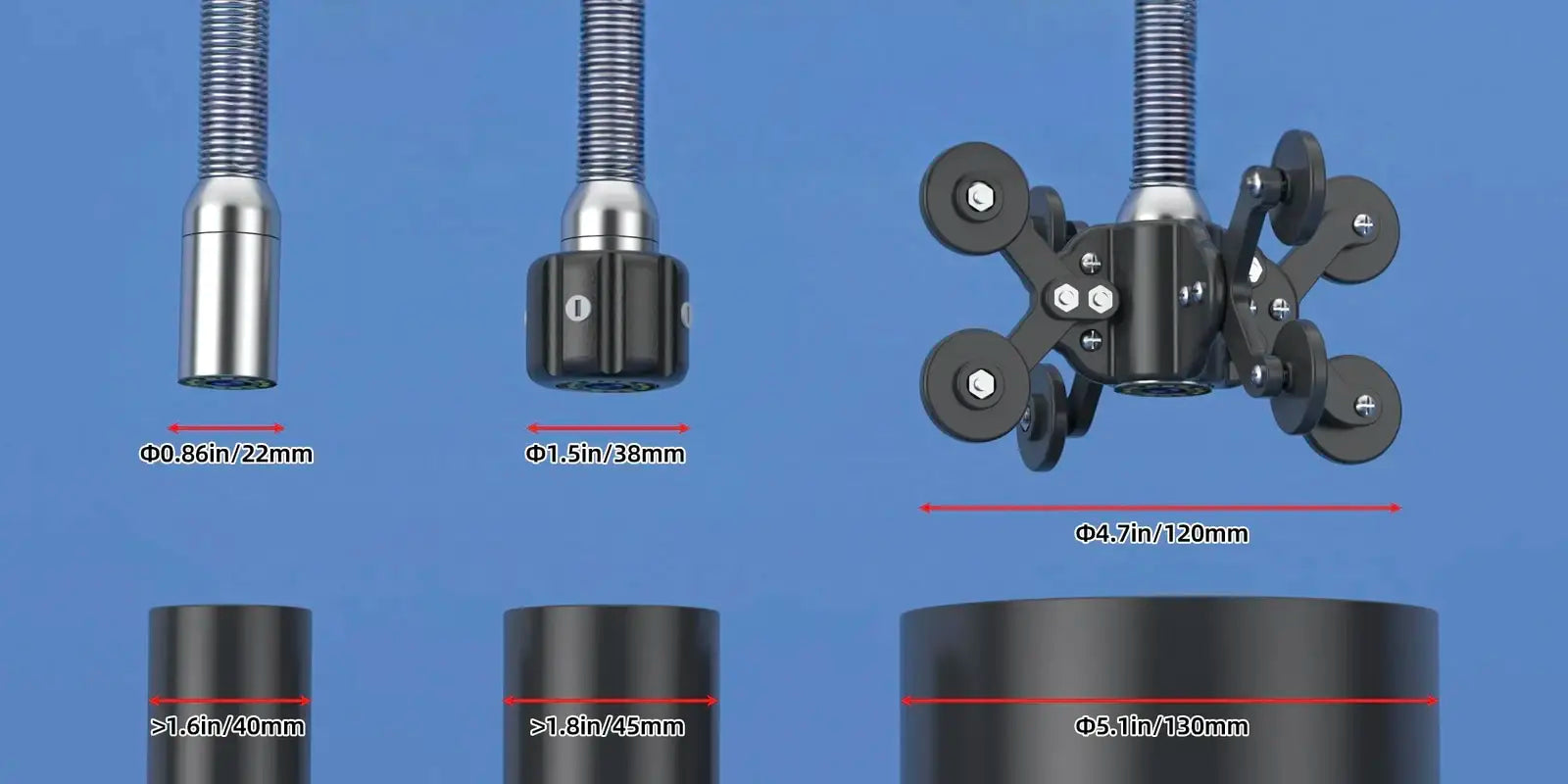How Far Can a Sewer Camera Go?
Sewer inspection cameras are widely used because they can effectively help us detect clogging, damage, root growth, or corrosion inside the pipes without digging or dismantling them. Although convenient, there are still many people who wonder how far a sewer camera can actually shoot.
The distance a sewer inspection camera can shoot is affected by a number of factors, including the type of camera, the length of the cable, and the environmental conditions. In this blog, we will analyze the detection distance of a sewer camera and the main factors that affect the distance. Let's read on!
What is a Sewer Camera?

Sewer cameras—also known as drain cameras—are specialized tools used to inspect the interior of pipelines. They typically consist of a small waterproof camera mounted on the end of a flexible cable, which can be manually or mechanically fed through the pipe. The camera transmits real-time video back to a monitor for easy viewing.
If you're wondering what a sewer camera is and how it works, you're not alone. These cameras are often equipped with advanced features like built-in locators and distance counters, helping users pinpoint exact locations and measure how far the camera has traveled.
Sewer cameras are widely used for locating blockages, detecting root intrusion, identifying cracks or corrosion, and verifying repair work, especially in scenarios where excavation is expensive or impractical.
How Far Can a Sewer Camera Go?

The maximum distance a sewer camera can reach largely depends on the length of its cable. Typically, these devices offer an inspection range of 65 to 400 feet (approximately 20 to 120 meters), with some high-end models extending even farther.
However, cable length isn’t the only factor that determines the camera's reach. Other important considerations include:
-
The flexibility and durability of the cable
-
The camera’s ability to navigate bends and turns in the pipe
-
The stability and strength of the signal transmission
Based on the camera’s grade, typical distance ranges are as follows:
-
Entry-level cameras: 65 to 100 feet (20 to 30 meters)
-
Mid-range professional cameras: 100 to 165 feet (30 to 50 meters)
-
High-end commercial cameras: 165 to 400 feet (50 to 120 meters) or more
Key Factors Affecting Sewer Camera Distance
1. Cable Length

This is the most fundamental limitation. No matter how advanced the system is, it can’t inspect beyond the length of its cable. For example, with a 30-meter cable, your maximum reach is 30 meters. When choosing a system, be sure the cable length fits your inspection needs—especially for larger properties or long sewer runs.
2. Pipe Diameter and Condition
Smaller diameter pipes are more difficult to navigate, especially if they are heavily corroded, filled with debris, or partially collapsed. Larger pipes are easier to inspect, but they often require a camera with a wider field of view. A cleaner, smoother pipe allows the camera to travel farther with less resistance.
3. Cable Stiffness and Flexibility
Push cables must strike a balance between rigidity and flexibility. If the cable is too stiff, it won’t maneuver through bends. If it’s too soft, it won’t push the camera forward effectively.
High-quality cables are often reinforced with fiberglass or other composite materials to enhance pushability without sacrificing flexibility.
4. Camera Size and Shape

The size of the plumbing camera affects its ability to pass through different types of pipes. Larger cameras can get stuck in narrow or joint-heavy pipes, while smaller cameras are more maneuverable but may lack visibility in wider pipelines. Choosing the right size camera for your specific pipe diameter is key to maximizing distance.
5. Signal Transmission Quality

As the camera moves deeper into the pipe, the video signal has to travel farther back to the monitor. Signal quality can degrade over long distances, especially in wet environments or metal pipes, leading to reduced image clarity. Higher-end systems often include signal amplifiers or shielded cables to ensure consistent video quality.
6. Propulsion Method: Push Rod vs. Motorized Crawler
Most sewer cameras rely on manual pushing, which limits range and control. In industrial or long-distance applications, motorized crawlers offer a better solution. They are self-propelled and can travel farther, faster, and more smoothly through large or straight pipes. This allows for more efficient inspections with less effort.
Typical Distance Ranges by Camera Type
Here's a general breakdown of how far sewer cameras can go based on type:
|
Camera Type |
Typical Reach |
Best For |
|
Entry-Level |
65–100 ft( 20–30 meters ) |
Homeowners, quick inspections |
|
Mid-Range |
100–200 ft ( 30–60 meters ) |
Plumbers, contractors |
|
Industrial |
200–400 ft ( 60–120+ meters ) |
Large commercial jobs |
When Do You Need a Longer Sewer Camera System?
Longer cable lengths are ideal when:
-
You're inspecting sewer mains or lateral lines in larger homes or buildings.
-
You're dealing with commercial or industrial pipe systems.
-
You want to avoid unnecessary dismantling or excavation work.
If you regularly encounter pipes longer than 30 meters, investing in a sewer inspection camera with a length of 50 meters or more can save you time and money in the long run. Longer-range systems are more versatile and reduce the need for multiple access points or repeat inspections.
✅ Browse our long-range sewer cameras, featuring cable options ranging from 65 ft to 525 ft, here.
Conclusion
Understanding how far a sewer camera can go is critical when choosing the right tool for your inspection job. For residential tasks, a 20- to 30-meter camera may be enough. For commercial, industrial, or municipal work, you'll need something that can go 50 meters or more.
Choosing the right sewer camera for your application requires consideration of the condition and layout of the pipe, as well as the self-adjusting and positioning features that come with the equipment. With the right sewer camera system, you can diagnose problems faster, reduce unnecessary labor, and improve overall site efficiency.










Leave a comment